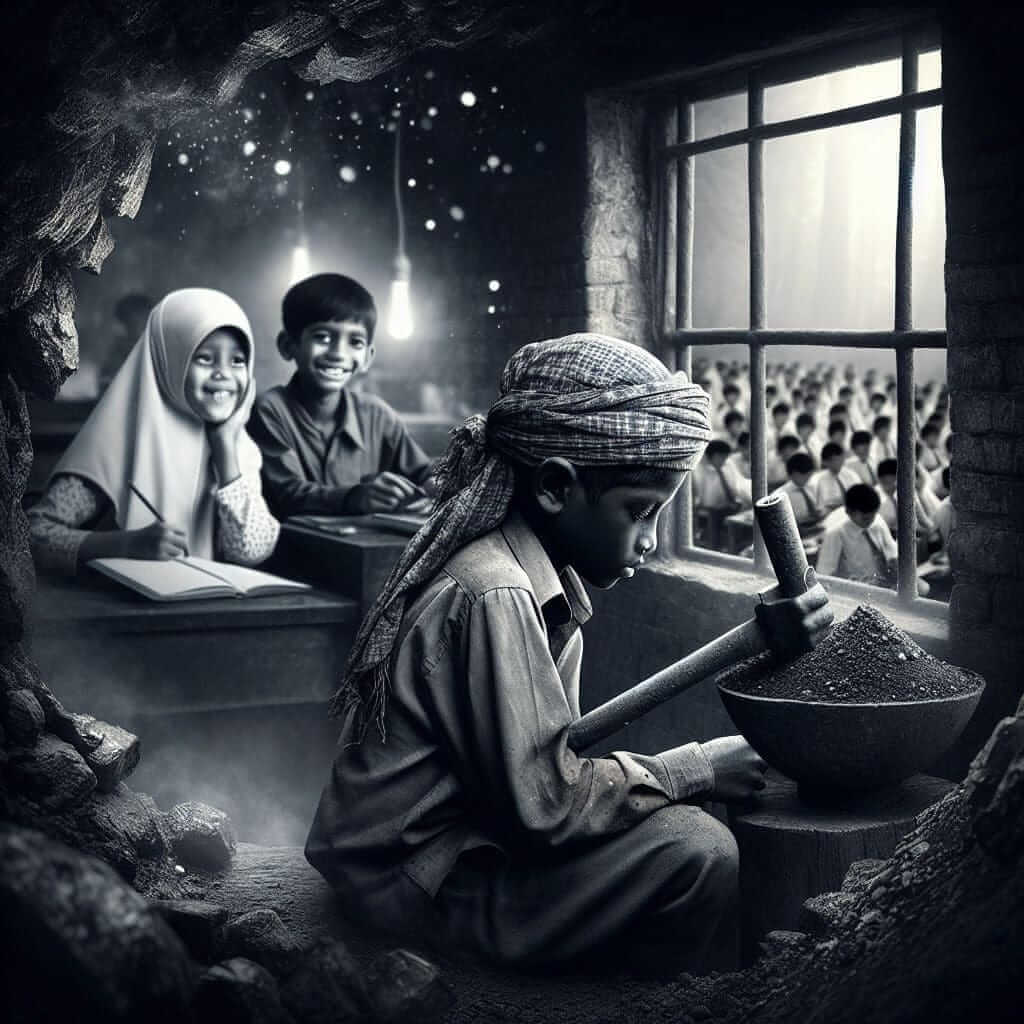Child labor, a persistent global issue, has profound and far-reaching consequences, particularly in the realm of education. This topic frequently surfaces in IELTS Writing Task 2, prompting candidates to analyze and present their perspectives on the detrimental effects of child labor on educational opportunities.
This comprehensive guide will delve into the intricacies of this pressing issue, providing you with the necessary tools and insights to excel in your IELTS Writing Task 2 exam. We’ll analyze potential essay questions, dissect a sample response, and equip you with relevant vocabulary to enhance your writing prowess.
Sample IELTS Writing Task 2 Questions
Here are some potential IELTS Writing Task 2 questions related to the effects of child labor on education:
- Many children in developing countries are forced into work at a young age. What are the causes of child labor and what effects does it have on their education?
- Child labor deprives children of their right to education and perpetuates a cycle of poverty. To what extent do you agree or disagree?
- Discuss the solutions to the problem of child labor and its impact on children’s access to education.
Sample Essay Analysis
Let’s choose the first question from the list above and craft a well-structured essay response:
Question: Many children in developing countries are forced into work at a young age. What are the causes of child labor and what effects does it have on their education?
Essay Analysis:
This question requires a two-part answer: addressing the causes of child labor and analyzing its impact on education. It’s crucial to maintain a clear and logical structure while providing relevant examples to support your points.
Model Essay:
Child labor remains a pervasive issue in many parts of the world, particularly in developing nations. While poverty is often cited as the primary driver, a complex interplay of factors contributes to this problem, with profound consequences for children’s education and future prospects.
One of the most significant causes of child labor is poverty. Impoverished families often rely on their children’s income to make ends meet. This economic desperation forces parents to prioritize immediate survival over their children’s long-term well-being. In such circumstances, education is often viewed as a luxury rather than a necessity.
Furthermore, limited access to quality education in developing countries perpetuates the cycle of poverty and child labor. When schools are inaccessible, unaffordable, or fail to provide relevant skills, parents may see little value in education, further increasing the likelihood of their children entering the workforce prematurely.
The impact of child labor on education is undeniably detrimental. Children engaged in work are often deprived of the opportunity to attend school regularly, if at all. Long working hours leave them exhausted and with little time or energy for studies. Moreover, the physically demanding and often hazardous nature of child labor can have severe physical and psychological consequences, hindering their cognitive development and learning abilities.
The lack of education perpetuates a vicious cycle of poverty. Children who miss out on education are more likely to remain trapped in low-paying jobs, lacking the necessary skills and knowledge to improve their lives and those of their families. This intergenerational transmission of poverty underscores the urgent need to address child labor and ensure access to quality education for all children.
In conclusion, child labor stems from a complex web of factors, with poverty and inadequate educational infrastructure being the most prominent. Its impact on children’s education is devastating, limiting their future opportunities and perpetuating the cycle of poverty. Addressing this multifaceted issue requires a multi-pronged approach involving poverty reduction strategies, improved access to quality education, and stringent enforcement of child labor laws. Only then can we hope to break the cycle and ensure a brighter future for all children.
(Word Count: 318 words)

Writing Tips
- Structure: Divide your essay into clear paragraphs, each addressing a specific aspect of the question.
- Vocabulary: Use a wide range of vocabulary related to child labor, education, and societal issues.
- Grammar: Pay attention to grammar accuracy, including tenses, subject-verb agreement, and articles.
- Examples: Provide specific examples to support your points and make your arguments more persuasive.
- Conclusion: Summarize your main points and restate your stance on the issue.
Vocabulary:
- Pervasive (adjective) /pəˈveɪsɪv/: (of an unwelcome influence or physical effect) spreading widely throughout an area or a group of people. Example: The pervasive issue of child labor demands immediate attention.
- Interplay (noun) /ˈɪntəpleɪ/: the way in which two or more things have an effect on each other. Example: Understanding the interplay between poverty and child labor is crucial.
- Profound (adjective) /prəˈfaʊnd/: very great or intense. Example: Child labor has profound consequences for a child’s future.
- Deprive (verb) /dɪˈpraɪv/: prevent (a person or place) from having or using something. Example: Child labor deprives children of their fundamental rights.
- Perpetuate (verb) /pəˈpɛtʃueɪt/: make (something, typically an undesirable situation or an unfounded belief) continue indefinitely. Example: Lack of education perpetuates the cycle of poverty.
- Detrimental (adjective) /ˌdɛtrɪˈmɛntl/: tending to cause harm. Example: Child labor has detrimental effects on a child’s physical and mental health.
- Hinder (verb) /ˈhɪndə/: create difficulties for (someone or something), resulting in delay or obstruction. Example: Long working hours hinder children’s ability to focus on their studies.
- Cognitive (adjective) /ˈkɒɡnɪtɪv/: relating to or involving the processes of thinking and understanding. Example: Child labor can impair cognitive development in children.
- Underscore (verb) /ˌʌndəˈskɔː/: emphasize the importance something. Example: The high rates of child labor underscore the need for stricter regulations.
- Multifaceted (adjective) /ˌmʌltiˈfæsɪtɪd/: having many different aspects or features. Example: Addressing child labor requires a multifaceted approach.
Conclusion
Mastering the art of writing a compelling IELTS essay on the impact of child labor on education requires a combination of understanding the issue, structuring your arguments logically, and employing relevant vocabulary effectively. This guide provides a framework and essential tools to approach this topic confidently. Remember to practice regularly and analyze sample essays to refine your writing skills further.